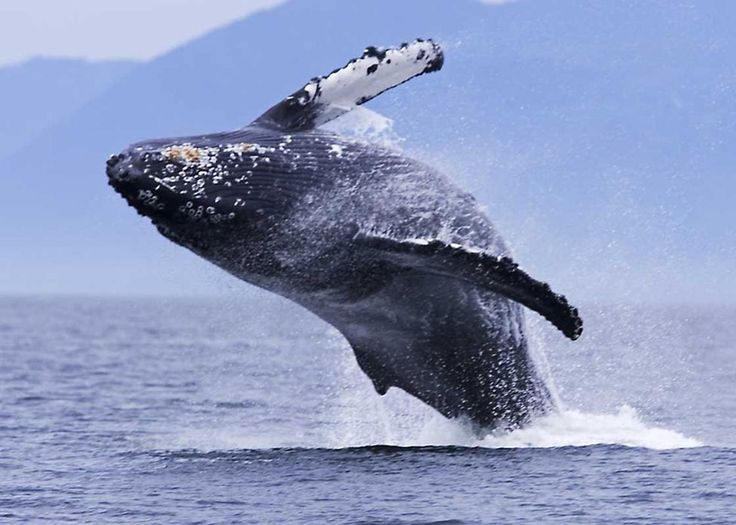The UK’s rugged coastlines and expansive seas provide prime locations for whale watching, attracting marine enthusiasts from across the globe. From the coasts of Scotland to the bays of Wales, the UK offers ample opportunities to see whales, dolphins, and other marine life up close. If you’re planning a whale-watching adventure, this guide will walk you through the essential steps to make the most of your experience. From the best times and places to go whale watching, to top tips on how to prepare, here’s everything you need to know.
1. Understanding Whale Watching Seasons in the UK
Timing is key to a successful whale-watching trip in the UK. While some marine animals can be spotted year-round, specific species of whales migrate through UK waters during certain months.
- Spring and Summer (April to September): This is the best time for whale watching in the UK, especially for species like minke whales. During these months, waters are often calmer, and sightings are more common.
- Summer (June to August): The warm summer months are peak viewing times for dolphins, basking sharks, and occasionally killer whales, especially along the coasts of Scotland and Wales.
- Autumn (September to November): While fewer whale-watching trips run in autumn, it’s still possible to spot some species, particularly in northern regions like Scotland. Seabirds and other wildlife, such as seals, are often more visible in these months as well.
To enhance your chances of spotting whales, check recent sightings before booking. Websites like SeaMor Dolphin Watching provide valuable information about local whale and dolphin activity in the waters of Cardigan Bay, Wales, helping you choose the best days for optimal sightings.
2. Choosing the Perfect Whale Watching Location
The UK boasts several fantastic whale-watching destinations, each offering unique opportunities to see diverse marine life. Here’s a quick guide to some of the top spots:
- Hebrides, Scotland: The Hebrides is famous for minke whale sightings, which are particularly common in summer. This scenic area, known for its rugged coastline and clear waters, is a favorite for spotting dolphins and occasionally larger species like orcas.
- Cardigan Bay, Wales: Known for its resident population of bottlenose dolphins, Cardigan Bay is one of the best places to enjoy whale watching. While whales are less frequent here, dolphins, porpoises, and seals abound, making it a rewarding experience. SeaMor Dolphin Watching is an excellent option for tours in Cardigan Bay, known for responsible practices and knowledgeable guides.
- Shetland Islands, Scotland: In the Shetland Islands, you might encounter orcas and humpback whales, particularly during the summer months. The waters surrounding these islands are rich in marine life, making it a hotspot for those hoping to spot various species.
- Cornwall, England: Cornwall’s warmer waters attract basking sharks, minke whales, and dolphins, especially in the summer. Newquay and Falmouth are among the best locations to embark on a whale-watching adventure in this area.
- Isle of Man: Located in the Irish Sea, the Isle of Man sees frequent sightings of minke whales, Risso’s dolphins, and harbor porpoises. Late spring through summer is the best time for wildlife viewing here.
Each location offers a unique whale-watching experience, so choose a destination based on the specific species you’re most interested in seeing.
3. Book a Responsible Whale Watching Tour Provider
Selecting a reputable tour provider ensures you’ll have an enjoyable, educational, and eco-friendly whale-watching experience. Responsible operators are committed to respecting marine life, minimizing disturbances, and following local guidelines for safe wildlife viewing.
SeaMor Dolphin Watching in Wales stands out as one of the best options for responsible and educational whale-watching tours. This provider operates small-group tours, which allow for more personalized experiences and less disturbance to the animals. They also prioritize sustainability and have extensive knowledge about local marine life, offering an enriching journey through Cardigan Bay’s beautiful waters.
4. Packing Essentials for Your Whale Watching Trip
Whale watching in the UK can be an all-weather affair, so packing the right items is essential. Here’s a list of must-haves for a comfortable and enjoyable experience:
- Waterproof Jacket and Trousers: The weather can be unpredictable along the coast, so it’s wise to bring waterproof clothing. Even on sunny days, the breeze at sea can be chilly, and you may encounter sprays of seawater.
- Binoculars: While tour providers typically bring you close to the action, binoculars allow for better views of whales and other marine life in the distance.
- Sunscreen and Sunglasses: Even on cloudy days, UV rays reflect off the water, making sun protection important. Polarized sunglasses can also reduce glare, making it easier to spot marine life.
- Camera with Zoom Lens: To capture high-quality images of whales, dolphins, and other sea life, a camera with a good zoom lens is recommended. Make sure it’s waterproof or bring a protective cover to keep it safe.
- Seasickness Remedies: Even if you don’t usually experience seasickness, it’s worth bringing medication or natural remedies in case the waves are rough.
5. Learning About Whale Behavior and Signs to Look For
Understanding whale behavior can enhance your whale-watching experience. Whales communicate through a variety of behaviors, and by learning what to watch for, you’ll be more likely to spot them.
- Blow or Spout: The first sign of a whale is often a “blow,” which is a spray of water caused when the whale exhales. This can be seen from a distance and is one of the easiest ways to spot whales.
- Breaching: Breaching occurs when a whale leaps out of the water and splashes back down. It’s a dramatic sight that’s often associated with younger, more playful whales or when they’re communicating with others.
- Tail Slapping: Some whales lift their tails and slap them against the water’s surface, which can create a loud sound. This behavior is thought to be a form of communication.
- Spyhopping: Spyhopping is when a whale lifts its head vertically out of the water, allowing it to get a better look at its surroundings. It’s a fascinating behavior to witness and often provides a great photo opportunity.
The more you know about these behaviors, the easier it will be to identify whales and other marine animals during your trip.
6. Practicing Eco-Friendly Whale Watching Etiquette
Responsible whale watching is crucial to ensuring that these magnificent creatures are not disturbed in their natural habitat. Here are some key points to remember:
- Maintain a Safe Distance: Many whale-watching regulations in the UK require boats to keep a safe distance from whales and dolphins to avoid disturbing them. Always follow your guide’s instructions and avoid getting too close to the animals.
- Avoid Flash Photography: Flash can disturb marine life, so avoid using it when photographing whales. Rely on natural light to capture the animals in a respectful way.
- Limit Noise: Excessive noise can distress whales, so it’s essential to keep noise levels low while on the boat. Speak softly and avoid making sudden, loud noises.
- Respect Local Guidelines: Each area may have specific guidelines to protect marine life, so be sure to listen to your guide and follow all local regulations. Many operators, including SeaMor Dolphin Watching, are actively involved in conservation efforts, providing insights into how visitors can help protect the ocean.
7. Staying Flexible and Checking Weather Conditions
Since Whale Watching UK is highly dependent on weather conditions, it’s essential to stay flexible with your plans. Wind and waves can affect visibility and make it difficult to spot whales. If your tour is canceled due to poor weather, consider rescheduling for the next available day.
To improve your chances of a successful trip, check the forecast regularly and stay in contact with your tour provider. Many operators, including SeaMor Dolphin Watching, provide updates on weather and sighting conditions, helping you plan the best day for whale watching.
8. Observing Other Marine Wildlife
While whales are the primary attraction, UK waters are home to an array of fascinating marine life that can make your trip even more memorable:
- Dolphins: Bottlenose and common dolphins are frequently sighted along the UK coastlines, especially in areas like Cardigan Bay.
- Seals: Grey and harbor seals are often spotted lounging on rocks or swimming near the shore. Scotland and Cornwall are popular locations for seal sightings.
- Basking Sharks: The world’s second-largest fish, basking sharks are often seen off the coast of Cornwall and the Isle of Man in the summer.
- Seabirds: Many whale-watching locations, particularly in Scotland, are also home to puffins, gannets, and other seabirds, providing an additional layer to the experience.
9. Making the Most of Your Whale Watching Adventure
Each whale-watching trip is unique, and sightings are not guaranteed. Here are a few tips to help you enjoy the experience to the fullest:
- Stay Patient: Whales are wild animals, and their appearances can be unpredictable. Sometimes the excitement is in the anticipation, so relax and enjoy the journey.
- Embrace the Environment: The coastal scenery and fresh sea air are part of the whale-watching experience, so take time to appreciate the surrounding landscape.
- Engage with Your Guide: Knowledgeable guides, like those at SeaMor Dolphin Watching, can enhance your experience by sharing insights about marine life, local conservation efforts, and the surrounding ecosystem.




